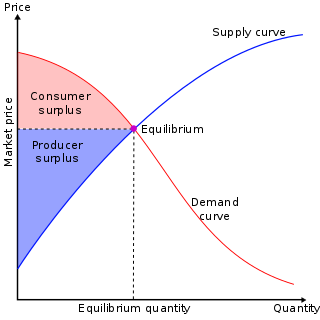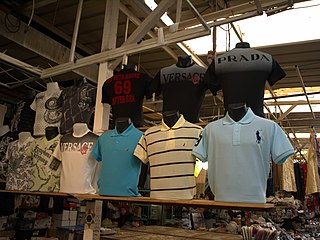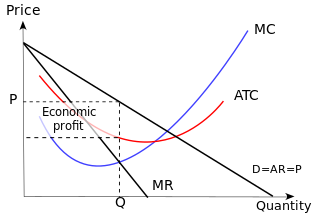This article needs additional citations for verification .(April 2016) |
| Marketing |
|---|
A product line extension is the use of an established product brand name for a new item in the same product category.
This article needs additional citations for verification .(April 2016) |
| Marketing |
|---|
A product line extension is the use of an established product brand name for a new item in the same product category.
Line extensions occur when a company introduces additional items in the same product category under the same brand name such as new flavors, forms, colors, added ingredients, package sizes. This is as opposed to brand extension which is a new product in a totally different product category. Line extension occurs when the company lengthens its product line beyond its current range. The company can extend its product line down-market stretch, up-market stretch, or both ways.
Product line extensions are a process where companies with an established brand alter the factors of a product or products to satisfy a refined segment in the market. [1] There are two types of product line extensions, horizontal and vertical. Horizontal extensions consist of keeping the price and quality consistent, but changing factors like flavour or colour to differentiate the products. Vertical extensions consist of increasing and decreasing the quality and price to create inferior and luxury goods. These product line extensions are often closely related to existing products in a brands portfolio, but targets specific brand consumers through this approach. [2]
Product line extensions help companies identify and tend to the needs of refined target markets. If applied appropriately, their advantage within the intended market is endless. [3]
Practically, when brands apply a product extension strategy they can often benefit from the new addition or additions. This is as extending their product line enlarges their product portfolio and as a result provides the consumers with more variety to choose from. This is positive, as consumers tend to enjoy being able to have choice and through expanding a brands product line, the brand is providing this choice.
Investing in this approach is commonly pursued by companies due to their desire to create revenue and to advance their competitive status against rival companies. The advantages when undergoing product line extensions is that the new product or products are commonly closely related to existing products, so the company often has the appropriate production process and capacity to produce the new product or products. [2]
Issues facing product line extensions can include company's investments in the new products without the desired return. The product may come at a loss or may not be able to make enough of the return the company was forecasting for. The new addition could also send confusion to the company's customer base, and in turn negatively affect the loyalty they have for the brand. [3] This can evidently become a long-term risk in terms of brand image, as consumers may have a new view of the brand as cheap, in the case of downward extension, or unrealistic and unreasonable in terms of upward extension. [1] An issue also connected to the extensions, could result in the production process becoming more and more complicated as a result of new products, this could affect the company's efficiency and quality in the production of the brands product range. [3]
An advantage of extending company product lines is the likely rise in sales, demand and market share. Product line extension increases the amount of different products available to consumers, and through adding more products into the market it keeps consumers interested. This can be helpful in avoiding customer base loss. [4]
A company positioned in the middle market may want to introduce a lower-priced line for any of the 3 reasons
An advantage to downward product line extension is it creates more competition between brands. This can be good for the consumer as product prices may become more competitive, and goods may become cheaper to purchase. Increased competition generated from the extension allows the brand to gain more market share over their competitors. The brand can also benefit from an increase in exposure through this competitive process. [2]
Brand image is a big contributing factor when it comes to product line extension. Within downward extension it can make the brand seem less luxurious, cheap, basic, and inconsistent. In a study, [1] the results revealed when high status brands downward extend their product line, consumers feel a sense of dishonesty and untrustworthy towards the brands image. This is as a result of luxury brands having a stereotype of being exclusive and high quality, and with the addition of a lower quality, cheaper product the consumers perceive this as a breach.
When extending the product line downward, the new product or products become more available to consumers and most likely, cheaper. With this product volume and price, a less-luxurious image can be formed around the brand by consumers. This can either be a positive or negative impact on the brand depending on which industry and market the brand is a part of. For example, Walmart is widely known for its low prices and availability, so this consumer image of the brand would not impact the company negatively. Whereas, if Prada were to start selling a downward product line of low quality, low priced goods this would impact the brand's high status, exclusivity and luxurious image negatively. [1]
However, when introducing downward line extensions, consumers may be opted to by this cheaper option the brand is providing rather than their upward line extension goods. This introduction may negatively affect the sales of their premium and more luxury goods. So while demand and increased market share may be a positive to downward line extensions, the approach may disadvantage the brands overall profit. [4]
Companies may wish to enter the high end of the market for more growth, target returning customers, [1] higher margins, or simply to position themselves as full-line manufacturers. Many markets have spawned surprising upscale segments: Starbucks in coffee, Häagen-Dazs in ice cream and Evian in bottled water. Leading Japanese auto companies have each introduced an upscale automobile: Toyota's Lexus, Nissan's Infiniti, and Honda's Acura. Note that they invented entirely new names rather than using or including their own names.
Brands extending their product lines upward successfully can benefit through the increasing amount of middle-class consumers that are becoming more capable and willing to invest their money in luxury products. Brands can adjust pricing to coincide with trends within the economy, to ensure the luxury goods do not lose too much of their consumer demand within their most popular market segments. [1]
Upward product line extension can advantage the brand through associating the new luxury product addition with the existing brand name. Additional high quality, high priced products can improve the image of the brand and create a new outlook within the consumer market through consumers associating the brand with its more exclusive and elite products. This can help with sales and demand if the luxury goods become quite popular and favourable. [2]
However, cheaper products may draw attention and demand away from a brands upward product line extension. A way to combat this is to increase the quality of the brands luxury goods, as well as targeting aspects of the consumer market that are able and prepared to pay more for the higher quality product. [3]
Companies serving the middle market might decide to stretch their line in both directions. Texas Instruments (TI) introduced its first calculators in the medium-price-medium-quality end of the market. Gradually, it added calculators at the lower end taking the share from Bowmar, and at the higher end to compete with Hewlett-Packard. This two-way stretch won Texas Instruments (TI) an early market leadership in the hand-calculator market.
Examples include

Monopolistic competition is a type of imperfect competition such that there are many producers competing against each other, but selling products that are differentiated from one another and hence are not perfect substitutes. In monopolistic competition, a firm takes the prices charged by its rivals as given and ignores the impact of its own prices on the prices of other firms. If this happens in the presence of coercive government, monopolistic competition will fall into government-granted monopoly. Unlike perfect competition, the firm maintains spare capacity. Models of monopolistic competition are often used to model industries. Textbook examples of industries with market structures similar to monopolistic competition include restaurants, cereal, clothing, shoes, and service industries in large cities. The "founding father" of the theory of monopolistic competition is Edward Hastings Chamberlin, who wrote a pioneering book on the subject, Theory of Monopolistic Competition (1933). Joan Robinson published a book The Economics of Imperfect Competition with a comparable theme of distinguishing perfect from imperfect competition. Further work on monopolistic competition was undertaken by Dixit and Stiglitz who created the Dixit-Stiglitz model which has proved applicable used in the sub fields of international trade theory, macroeconomics and economic geography.

In mainstream economics, economic surplus, also known as total welfare or total social welfare or Marshallian surplus, refers to two related quantities:

To counterfeit means to imitate something authentic, with the intent to steal, destroy, or replace the original, for use in illegal transactions, or otherwise to deceive individuals into believing that the fake is of equal or greater value than the real thing. Counterfeit products are fakes or unauthorized replicas of the real product. Counterfeit products are often produced with the intent to take advantage of the superior value of the imitated product. The word counterfeit frequently describes both the forgeries of currency and documents as well as the imitations of items such as clothing, handbags, shoes, pharmaceuticals, automobile parts, unapproved aircraft parts, watches, electronics and electronic parts, software, works of art, toys, and movies.
In marketing jargon, product lining is offering several related products for sale individually. Unlike product bundling, where several products are combined into one group, which is then offered for sale as a units, product lining involves offering the products for sale separately. A line can comprise related products of various sizes, types, colors, qualities, or prices. Line depth refers to the number of subcategories a category has. Line consistency refers to how closely related the products that make up the line are. Line vulnerability refers to the percentage of sales or profits that are derived from only a few products in the line.

Pricing is the process whereby a business sets the price at which it will sell its products and services, and may be part of the business's marketing plan. In setting prices, the business will take into account the price at which it could acquire the goods, the manufacturing cost, the marketplace, competition, market condition, brand, and quality of product.
Brand equity, in marketing, is the worth of a brand in and of itself — i.e., the social value of a well-known brand name. The owner of a well-known brand name can generate more revenue simply from brand recognition, as consumers perceive the products of well-known brands as better than those of lesser-known brands.
In economics and marketing, product differentiation is the process of distinguishing a product or service from others, to make it more attractive to a particular target market. This involves differentiating it from competitors' products as well as a firm's own products. The concept was proposed by Edward Chamberlin in his 1933 The Theory of Monopolistic Competition.

In economics, an inferior good is a good whose demand decreases when consumer income rises, unlike normal goods, for which the opposite is observed. Normal goods are those goods for which the demand rises as consumer income rises.

A Veblen good is a type of luxury good for which the demand for a good increases as the price increases, in apparent contradiction of the law of demand, resulting in an upward-sloping demand curve. The higher prices of Veblen goods may make them desirable as a status symbol in the practices of conspicuous consumption and conspicuous leisure. A product may be a Veblen good because it is a positional good, something few others can own.
In microeconomics, two goods are substitutes if the products could be used for the same purpose by the consumers. That is, a consumer perceives both goods as similar or comparable, so that having more of one good causes the consumer to desire less of the other good. Contrary to complementary goods and independent goods, substitute goods may replace each other in use due to changing economic conditions. An example of substitute goods is Coca-Cola and Pepsi; the interchangeable aspect of these goods is due to the similarity of the purpose they serve, i.e fulfilling customers' desire for a soft drink. These types of substitutes can be referred to as close substitutes.

In microeconomics, the law of demand is a fundamental principle which states that there is an inverse relationship between price and quantity demanded. In other words, "conditional on all else being equal, as the price of a good increases (↑), quantity demanded will decrease (↓); conversely, as the price of a good decreases (↓), quantity demanded will increase (↑)". Alfred Marshall worded this as: "When then we say that a person's demand for anything increases, we mean that he will buy more of it than he would before at the same price, and that he will buy as much of it as before at a higher price". The law of demand, however, only makes a qualitative statement in the sense that it describes the direction of change in the amount of quantity demanded but not the magnitude of change.
In economics, a luxury good is a good for which demand increases more than what is proportional as income rises, so that expenditures on the good become a greater proportion of overall spending.

Private label products are those manufactured by one company for sale under another company's brand. Private-label goods are available in a wide range of industries from food to cosmetics. Private label brands managed solely by a retailer for sale in a specific chain of stores are called store brands or own brands.

Non-price competition is a marketing strategy "in which one firm tries to distinguish its product or service from competing products on the basis of attributes like design and workmanship". It often occurs in imperfectly competitive markets because it exists between two or more producers that sell goods and services at the same prices but compete to increase their respective market shares through non-price measures such as marketing schemes and greater quality. It is a form of competition that requires firms to focus on product differentiation instead of pricing strategies among competitors. Such differentiation measures allowing for firms to distinguish themselves, and their products from competitors, may include, offering superb quality of service, extensive distribution, customer focus, or any sustainable competitive advantage other than price. When price controls are not present, the set of competitive equilibria naturally correspond to the state of natural outcomes in Hatfield and Milgrom's two-sided matching with contracts model.

A business can use a variety of pricing strategies when selling a product or service. To determine the most effective pricing strategy for a company, senior executives need to first identify the company's pricing position, pricing segment, pricing capability and their competitive pricing reaction strategy. Pricing strategies and tactics vary from company to company, and also differ across countries, cultures, industries and over time, with the maturing of industries and markets and changes in wider economic conditions.
Brand extension or brand stretching is a marketing strategy in which a firm marketing a product with a well-developed image uses the same brand name in a different product category. The new product is called a spin-off.
The term "mass market" refers to a market for goods produced on a large scale for a significant number of end consumers. The mass market differs from the niche market in that the former focuses on consumers with a wide variety of backgrounds with no identifiable preferences and expectations in a large market segment. Traditionally, businesses reach out to the mass market with advertising messages through a variety of media including radio, TV, newspapers and the Web.

A brand is a name, term, design, symbol or any other feature that distinguishes one seller's good or service from those of other sellers. Brands are used in business, marketing, and advertising for recognition and, importantly, to create and store value as brand equity for the object identified, to the benefit of the brand's customers, its owners and shareholders. Name brands are sometimes distinguished from generic or store brands.
Customer cost refers not only to the price of a product, but it also encompasses the purchase costs, use costs and the post-use costs. Purchase costs consist of the cost of searching for a product, gathering information about the product and the cost of obtaining that information. Usually, the highest use costs arise for durable goods that have a high demand on resources, such as energy or water, or those with high maintenance costs. Post-use costs encompass the costs for collecting, storing and disposing of the product once the item has been discarded.
Massification is a strategy that some luxury companies use in order to attain growth in the sales of product. Some luxury brands have taken and used the concept of massification to allow their brands to grow to accommodate a broader market. As a method of implementing massification, companies have created diffusion lines. Diffusion lines are an offshoot of a company or a designers original line that is less expensive in order to reach a broader market and gain a wider consumer base. Another strategy used in massification is brand extensions, which is when an already established company releases a new product under their name.
{{cite journal}}: CS1 maint: multiple names: authors list (link){{cite journal}}: CS1 maint: multiple names: authors list (link)